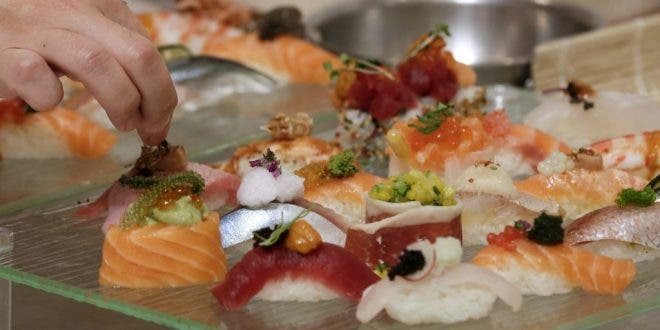We are used to eating the legumes that the Mediterranean diet marks us, but new foods are making their way into our dishes that complete this diet by introducing an oriental and novel nuance. The Alphabet of Nutrition informs us about them
Food from other cultures has reached our tables. Laura González, head of nutrition and health at Nestlé, delves into those who have entered the strongest since the Alphabet of Nutrition: miso, tempé, tofu, sushi or kefir are strong bets that have become fashionable, whose properties must be known good for incorporation into our diet in a healthy way.
Soy. Controversy in its consumption: superfood or food that produces unwanted effects?
Soy is a popular legume among the Asian population. Although it is also consumed by the European population as a legume, its intake provides health benefits. Despite the fact that the media or influential people exaggerate its benefits (such as that it cures cancer) or instills warnings about supposed risks (such as that it causes breast cancer or has hormonal effects associated with its consumption), Laura González points out.
SOY, NEITHER PANACEA NOR POISON
Like any other legume, it is rich in fiber and contains antioxidants, although unlike those consumed in our environment, such as lentils, chickpeas, or beans, it is rich in polyunsaturated fats. It is a myth that soy, due to its consumption of isoflavones, can cause breast cancer. In 2014 the American Institute for Cancer Research denied this relationship, recalls the nutritionist.
It has also been extended that the consumption of soy causes the growth of the breasts in children or that it affects the reproductive, immune or neurocognitive function. Given this, there are various publications and organizations such as the American Pediatric Association indicate that there is no conclusive evidence that soy isoflavones have a worrying negative effect on humans.
That is, it does not affect development, reproduction or endocrine function. However, the general recommendation is to consume all kinds of legumes but mainly those traditionally used in our cultural and gastronomic environment and which are basic in the Mediterranean diet, adds the expert, who reviews a series of these foods.
Miso
It is a condiment originating from China and Japan. It is an aromatic paste made with soybeans, alone or with some cereals such as rice, barley or rye. For its preparation, the soybeans are cooked with the chosen cereal, a fungus is incorporated, salt is added and then it is left to ferment. The intensity of its flavor depends on the cereal chosen for the mixture and the time that we have it fermenting.
It has all the properties of soy and the benefits of fermented ones. But you have to take into account its high salt content, so you should not add more salt to the dish and it is not a recommended product for people suffering from hypertension. Its most common use is to prepare soups (for example, the famous miso soup). It can also be used as a seasoning for other dishes.
Tempé
It is a product of oriental origin from the fermentation of soybeans, cooked by means of a fungus.
Like any legume, it is rich in protein, vitamins and is high in fiber. Fermentation of legumes can reduce the amount of fiber in some. Tempé, being of plant origin, is widely used in the diets of vegetarians. It provides different textures and presentations to the legumes that are normally consumed in our environment.
It is suitable for people with celiac disease because it does not contain gluten and many different recipes can be made with it. Simply cutting dice for salads or to prepare skewers. It can also be sliced or sautéed as an accompaniment to other dishes such as vegetable meat, to prepare sandwiches or simply cooked with vegetables and rice. It is shaped like a block or cake; its flavor is mild, as if it were yeast, dried fruit or fresh bread. It all depends on the way it is cooked.
Tofu
It is the derivative of soy that we know best. It has its origin in China and is a preparation based on soaked soybeans, which have also been crushed, filtered with a coagulant that is usually calcium sulfate, magnesium chloride or calcium chloride. It does not have the same properties as fermented foods since, although during its preparation, fermentation occurs in the final product and there are no live bacteria.
It is widely used in vegetarian diets because its texture is similar to that of meat. And like any soy-based preparation, it has a high protein and mineral content. It is quite easy to digest and to use. Its block shape allows it to be chopped in different ways and its neutral flavor allows it to be used in many dishes.
Sushi
Typical food of Japanese cuisine, currently very popular in the world. It is a very simple dish but at the same time very elaborate with an important nutritional contribution, thanks to its main ingredients: rice, which is dressed with vinegar, raw fish or shellfish, vegetables and nori seaweed. Sushi combines foods rich in vitamins (vitamins of group A, B, C, E), minerals such as iodine, iron, calcium, phosphorus, omega 3 and omega 6 polyunsaturated fatty acids and protein.
The calorie intake will depend on the amount of rice and they do not contain gluten, it is prepared by wrapping the fish and rice with the seaweed in the form of a roll that is then cut into smaller portions, generally as a bite. If they are prepared in the form of a meatball with rice and fish, they are called nigiri. This preparation is usually accompanied by soy sauce that is very rich in salt.
Kefir
It is also a fermented but little known product. Native to eastern Europe. It is fermented with bacteria and yeasts, it looks quite similar to yogurt and can be made from water or milk by adding some white balls that are known as kefir nodules.
If it is made from milk, the sugars themselves ferment, but if it is made with water, some type of sugar must be added to achieve fermentation. Fermentation at the end reduces lactose levels, when kefir is made with milk so it may be suitable for some people with lactose intolerance who are not very sensitive.
However, water kefir does not contain lactose, it is an easily digestible food that favors the regeneration of the intestinal flora. Generally it can be taken alone but it can also be combined with fruits, cereals and seeds.
It’s a fashion?
Many of these fermented foods have been used for hundreds of years. The fermentation process increases the acidity and makes the food keep longer. The benefits of fermented foods are very varied and depend on what food it is and what ingredients are added during the process. In addition to being a great preservation method and giving food an intense and characteristic flavor, the live bacteria they contain can contribute to the establishment of healthy intestinal flora that compete with others that are not.





